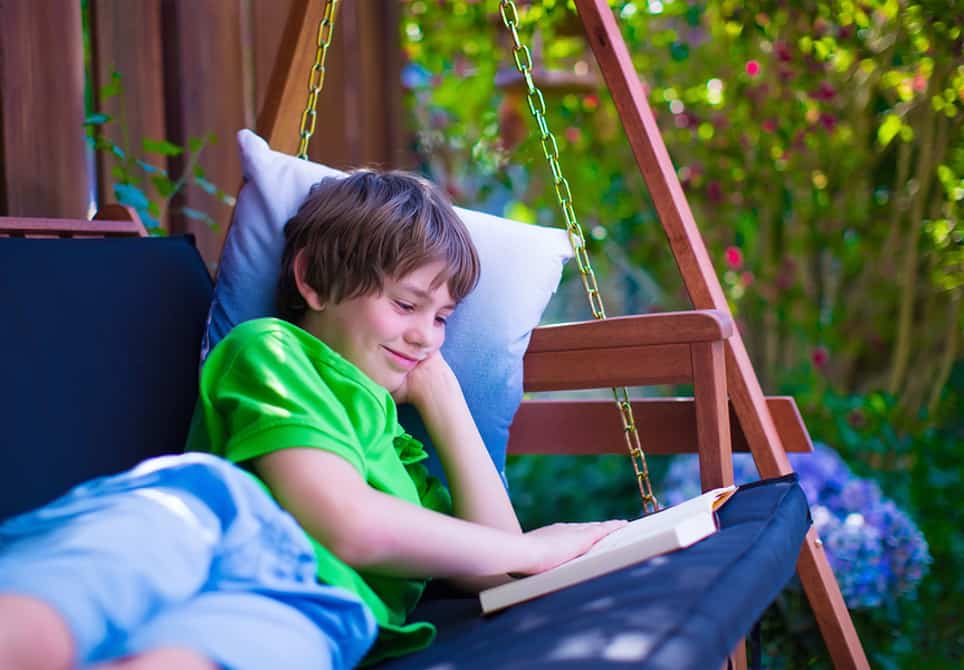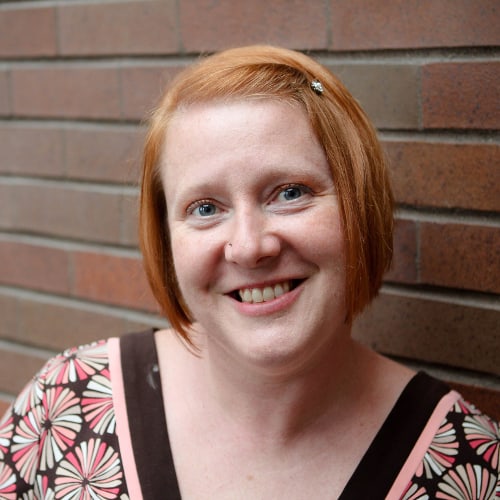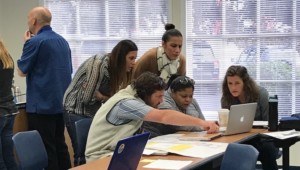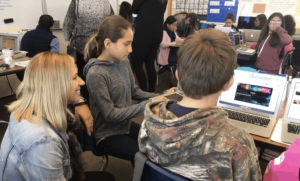Beat the Summer Slide with Project-Based Learning

Like an infomercial for summer reading, I walked dutifully into the Barnes & Noble flanked on one side by my six-year-old, Zoey, and on the other with my three-year-old, Oliver.
We browsed the tremendous selection of enrichment and review books, and I finally decided on “summer bridge” books, which would review the prior year and lay the foundation for the next school year.
As we approached the counter, I was feeling mighty proud of myself. I posted the charts on the fridge, ready to fill it with stickers and stars, confident that my kids would not be victims of the vicious “summer slide”–which is essentially the theory that reading and math skills are “use it or lose it,” and that extended breaks from either over the summer will result in a loss that will need to be remediated in the fall.
Now looking back, I want to pat my younger self on the head and say, “Isn’t that cute? You thought workbooks would be fun.”
Beyond the Workbook
This of course was before I was a full-fledged Project Based Learning (PBL) geek, but that summer is one of the reasons I point to for transforming my classroom from a place where work gets “done” into a place where experiences happen and are shared.
As you can probably guess, no amount of stickers was going to salvage my boring summer lesson plan. Looking back, I can’t fathom why I thought this would be a good idea, but I know my heart is in the right place, just like yours is–even if you already bought the workbook! How can parents harness the positive energy we all associate with summer break instead of smother it with a workbook? I have found that my students (and my own kids) are more willing to grow and stretch when there is choice and high interest.
Passion Projects
This summer my kids are going to replicate the Passion Project I am just completing in my class. Just like my students, they will read a non-fiction book of at least 100 pages, create three learning experiences for themselves (with my guidance, money and transportation, of course), and then document the learning experience on a website they will create and prepare for a digital show and tell night. They will also write a book review and link it to the book on their website.
These are extremely useful 21st century skills, as well as a great way to stay sharp in the summer. My children are now 11 and 8, but even if they were younger, it would still be possible to do every step up until the website, in which case I’d probably have them create a slideshow on Powerpoint–yes, even at three, a child can pick the best pictures to tell his or her story, which is the draw of PBL.
Assuming you aren’t a dorky teacher like myself, you might be wondering how to begin this Passion Project? Take a trip to the library and let your child wander around. Settle on a topic that your child would like to investigate. Next, have him brainstorm (either in drawings, mindmaps or some other method) a list of questions that he thinks are important about a topic. Make sure that your child is choosing something that is truly interesting, as the project is designed to take about a month and a half. I caution students that if they choose a topic which they are already overly familiar, they will become bored. The right mix falls is somewhere between, “I’ve always wondered” and “I’ve never even heard of it.”
21st Century Skills
After your child has created questions, help him or her choose a question that is not yes/no and is complex enough. The topics are supposed to be of high interest, so even if it doesn’t feel academic, it will still teach 21st century skills. This website, created by my eighth grade student Megan Bickert, is not academic per se–why isn’t dance considered a sport? My favorite project is her video tutorial of how to apply make-up for a dance recital.
No matter if this can be considered “scholarly” or not, it is clear that she uses research, technology, critical thinking, reading, and writing skills to complete the project. On the other hand, completely academic topics are appealing to some kids, and it is an opportunity to extend and refine knowledge they have recently acquired. Mark Lanning, another of my eighth graders, grew interested in the Holocaust during this year’s social studies curriculum, but went deeper for his project.
BAM
I asked my own kids tonight what they are considering. My son Oliver is going to research violence and video games. He wants to know why kids like them and why adults don’t. This is a pretty heavy topic for an eight-year-old, but it is something he is wrestling with personally since so many of his friends play games that I won’t let him play. He’s content, for the most part, to play the fairly innocent Mario Bros., but since “everyone” loves the more violent games he wants to know the appeal. I’m particularly happy with his choice this summer because it has all the necessities for good PBL. I call it BAM. Burning question, Authentic audience, and Millennial skills.
My daughter is less decisive, and that’s okay too. She tends toward the academic usually, and I think her latest interest in several young adult series will eventually pull her in. She’s read all of the Harry Potter books, several Twilight books, the Hunger Game series and is now working on Divergent. I’m going to steer her a bit in the direction of creating a question around this interest of hers. She might want to look at how girls are portrayed, perhaps deciding on “Which young adult series has the best role model for girls?” But I’ll have to let her play around with the ideas for awhile before she decides because it has to be her idea, not mine.
Does PBL Beat Summer Slide?
This sounds great, but what about all the research on “summer slide?” Will projects like this do the trick, keeping our students from falling behind? This is where the parent or teacher plays a role as the facilitator of the projects.
For example, last summer Zoey needed to go to the science museum to research a part of her project. To keep her math sharp, I asked her to figure out how much it would cost for gas money and admission for three of us. Then she needed to figure out how much money it cost us per hour for the three hours we visited. This was real math in action, and perfectly suitable for a child going into fifth grade. With a little creativity, any parent–teacher or not–can create learning experiences that go beyond the pages of a workbook while making memories with their children.
For more, see:
- Summer Brain Drain Prevention: Opportunities for Students, Teachers and Parents
- Project Ed Inspires Students to Create Their Own Summer Blockbuster and Tackle the Summer Slide
Stay in-the-know with all things EdTech and innovations in learning by signing up to receive the weekly Smart Update.






0 Comments
Leave a Comment
Your email address will not be published. All fields are required.